Published 15 October 2017 ● Last Updated on 11 August 2020
Once I was done setting up my kitchen with an eco-friendly design, appliances and everything else possible [read Eco-friendly Kitchen Part 1 ], I realised that the day-to-day actions might make it impossible to maintain its eco-friendly intent. For instance using plastics for storage and cling wraps would be almost counterproductive to my otherwise sustainably designed kitchen. That in mind, one fine day, my husband and I set down everything else and decided to explore the local crafts market. Glad we did, as we picked up several eco-friendly gems for our kitchen. From wooden ladles & spoons to glass/ceramic containers, everything was so pretty too! We opted for steel plates, tumblers and bowls, a copper jug for our dining table… (a lot like my grandma’s place).
1. Storage options
Storage is synonymous with ‘airtight’ for most of us. And there’s a swarm of airtight plastic containers in the super market. But it’s not necessarily the only option. I tried to avoid plastic by going for glass and ceramic ones with airtight cap linings. I ended up buying glass/ceramic spice containers, sauce tumblers, and glass bottle for storing milk. Even though it means one has to be very careful while handling these, I’m definitely happy with less plastic in my kitchen.
In Singapore: Head over to Ikea for some chic glass boxes or simply reuse those cute jam/ Nutella/honey jars. Label what you plan to store with a marker pen or just leave it.
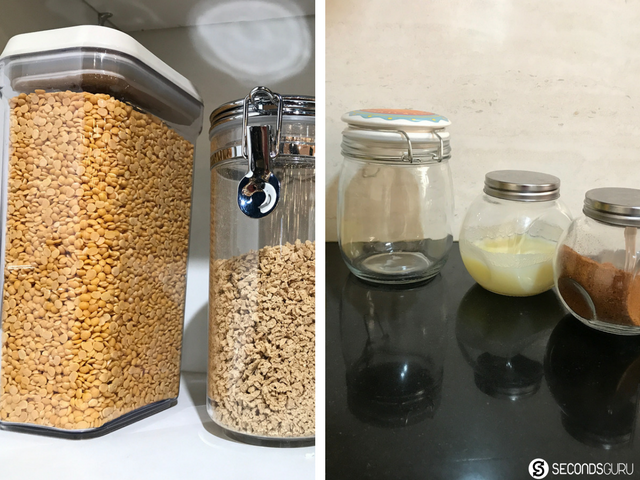
2. Plates and cutlery
When it came to dinner sets, no need to get lured by the fibre-based ones that promise zero breakage & lovely designs. I purposefully went for steel and copper sets for daily use and kept the bone-china for special occasions. It gives my kitchen a touch of rustic charm while making sure I don’t slowly accumulate molten plastic in my system. One thing I did out of nostalgia was getting a hammered copper water jug for my table. But then I could always justify the goodness of copper-infused water. ☺
In Singapore: You can buy steel dinnerware at Mustafa or at Jyothi stores in Little India
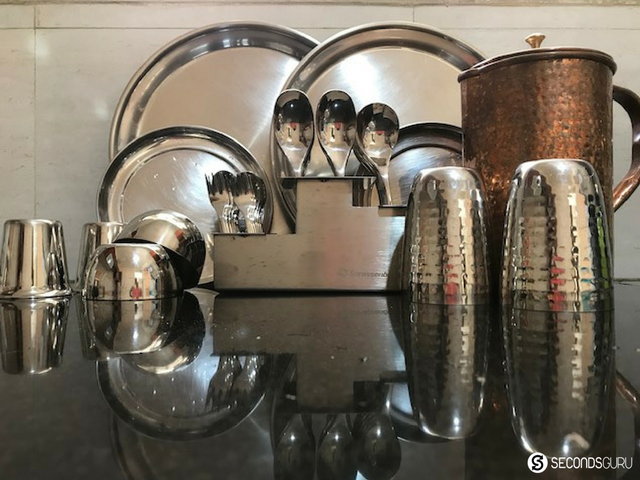
3. Ladles and utensils
Confession time: I had this infatuation with Teflon coated non-stick utensils at one point. They are so convenient and easy to use for a beginner like me. I mean these were practically my best friend till I encountered the article and lawsuit on the company that manufactures these. Teflon being a carcinogen, is definitely not a kitchen-friendly substance. So please rule out anything that even remotely mentions Teflon. Rather go for the ceramic coated pans or even better the iron skillets. Many professional chefs are now favouring old-fashioned cast iron cookware and it has even been proven to be better for our health because it may impart iron into our diets. After some research, I came across terracotta utensils as well. Thinking of giving it a try!!
In Singapore: Buy wooden ladels online at Etsy store or Redmart
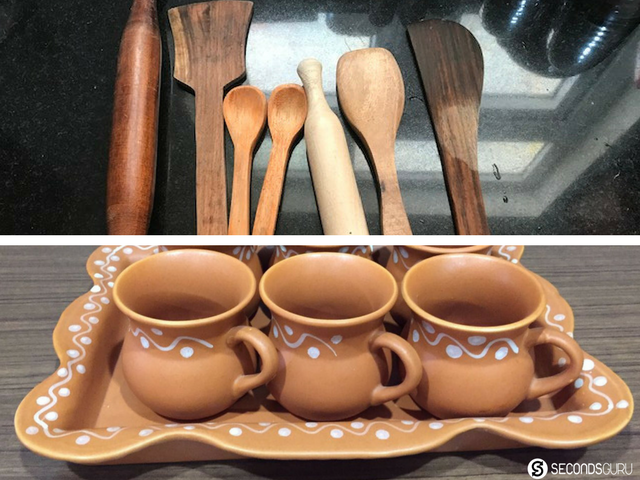
4. Cloth/paper instead of plastic
Plastic wrap and tin foil may seem like conveniences but they’re wasteful and, let’s admit it, kind of annoying to use. Rather use glass containers to store leftovers with zero waste and no hassle. Paper kitchen towels, aluminium foils, cling wraps made me crazy till found these DIY options on the internet. Here’s what I did:
-Paper towel: Chuck them out and get thin cotton towels instead. Cheat sheet- You can use them for absorbing oil from the fries ☺
-Aluminum foil: Get airtight lunchboxes and wrap your rolls with tissue/cheesecloth
-Cling film: Beeswax cloth and tying cheese cloth are good options
One more important thing to do is get a cloth shopping bag and say no to the huge plastic ones they give you in the mart. Thanks to my husband, I have now a drawer full of those annoying plastic bags I was trying to get rid of. Don’t tell him, but his old T-shirts will soon pay for this by transforming into shopping bags!! Till then, I am using a canvas bag for my veggie shopping.
In Singapore: Buy cotton covers and beeswax cloth for your leftover food at Neis Haus. You can even make your own beeswax cloth.
DIY options
The itchy crafts enthusiast in me jumps at any chance of reusing anything that is too good for the trash can. So I suggest picking up those cornflakes boxes and crafting away. I made this cornflakes box storage for my husband’s knick-knacks and a newspaper holder for out front door (which my neighbours adore).
Here are some other interesting DIY ideas to recycle and create useful items for your kitchen:
Bees Wax cloth, Wind chimes out of Plastic bottles, Cereal box organizer, Shopping bag out of T-shirt,
So what are you waiting for? Go DIY the hell out of all the non-biodegradable waste and of course have fun while you do it. ☺
5. Kitchen garden and compost unit
A kitchen garden and compost unit go hand in hand when it comes to urban farming. If you are keen on getting homegrown herbs, it’s a good idea to start with an indoor herb station near your kitchen window/utility balcony as most edible plants require six hours of light daily, either from sunlight or a grow light. Recently I came across these coir planters that come with potting soil, seed and a small gardening kit. Lovely option to imbibe farming as a hobby among children.
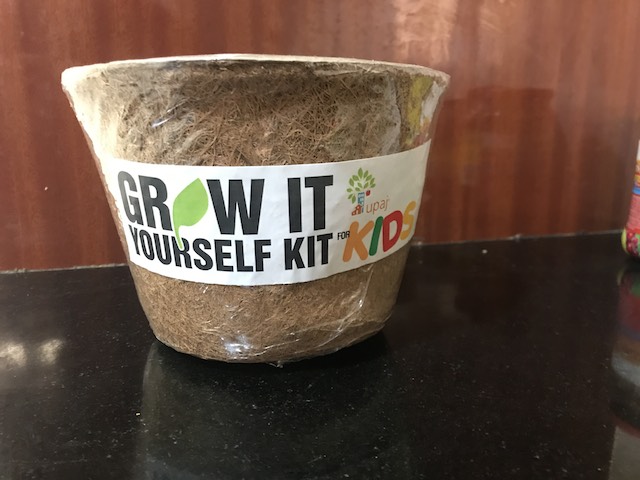
The amount of food waste, peels & other degradable items generated at out kitchens is huge. Studies show that 140 pounds of waste per person can be prevented from going into landfills each year by composting. In turn, you save up on some fertilizer bills for your garden & minimize your carbon footprint. For compost unit, grind veggie and fruit peels and bury them in the soil. Using worms is not compulsory if you are afraid of them (I AM). Use tea leaves and coffee dust for fertilizers, garlic and neem water mix as the pesticide.
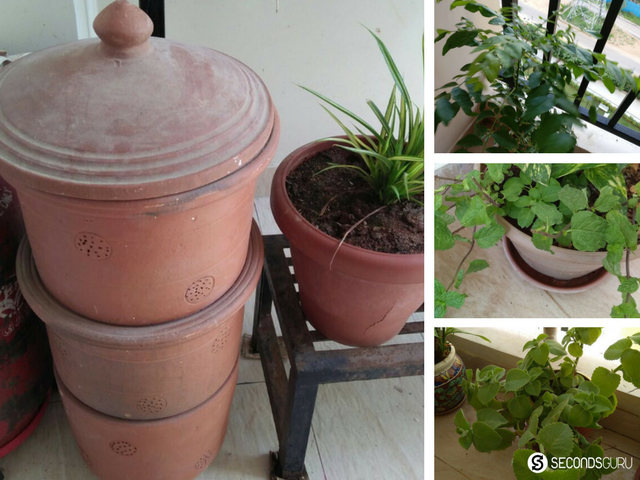
But if you are setting up a conventional composting system in the utility area/balcony, go for a compact one that promises minimal odour issues. Try the ones similar to the Naturemill. If you happen to have outdoor space, then you can actually take it to a different level and start a large scale composting unit. Several online resources such as howtocompost.org can help you with that. Using this compost as fertilizer for your herb garden and flower pots can make your gardening even more eco-friendly.
In Singapore: You can refer to Secondsguru’s guide to composting at home.
Now that you have so many options, what are you waiting for!! Let’s make our kitchen fun & green at the same time. Happy adapting to an eco eco-friendly lifestyle in your kitchen!
Related articles
–Eco Homes| How to set up an eco-friendly kitchen
–Composting at home| A step-by-step guide
-Padmalaya
Padmalaya Mallick is a Business Consultant at Deloitte on weekdays. She is an avid bibliophile, a rather moody writer and painter during weekends but– more importantly a traveler and day-dreamer! Her love for nature comes from her dad, who she credits with teaching her everything she knows about urban farming & recycling. Padmalaya aspires to change people’s perception that going green is drab. In fact, she wants to show the world how amazingly elegant ‘eco-friendly lifestyle’ can become.



0 Comments